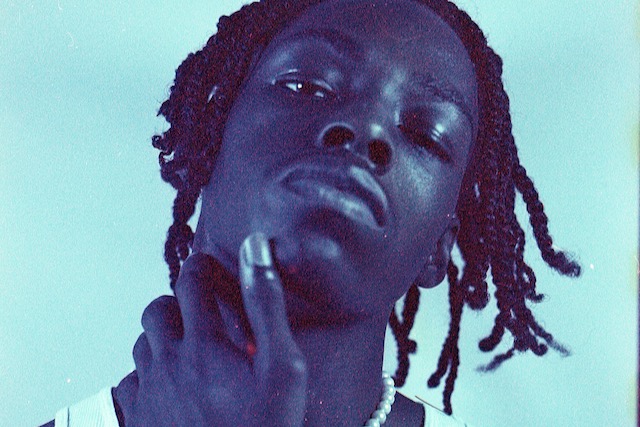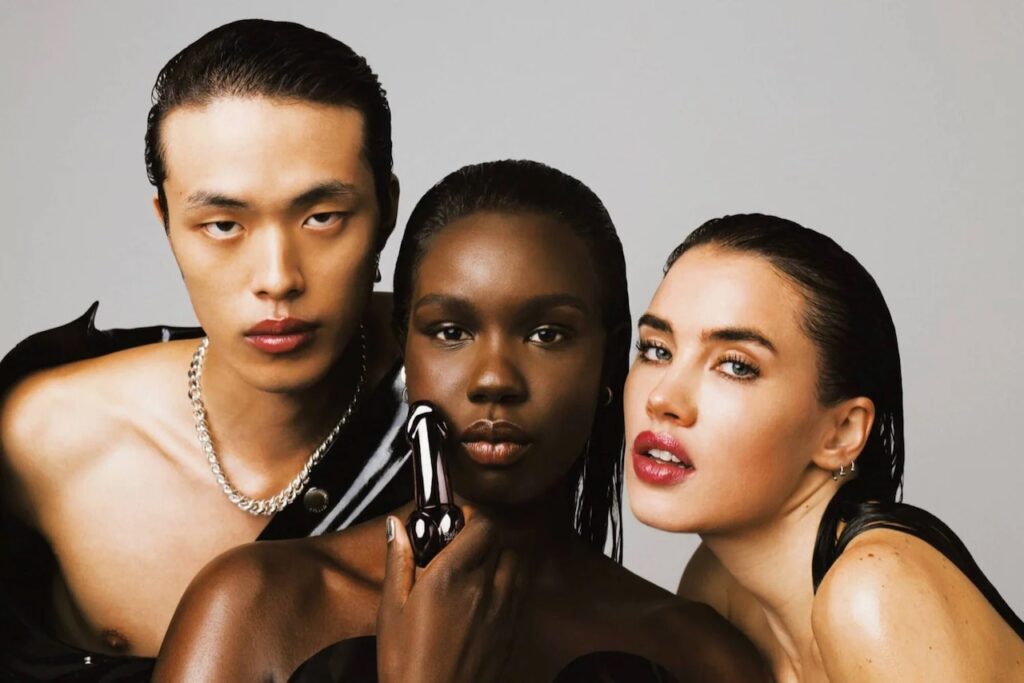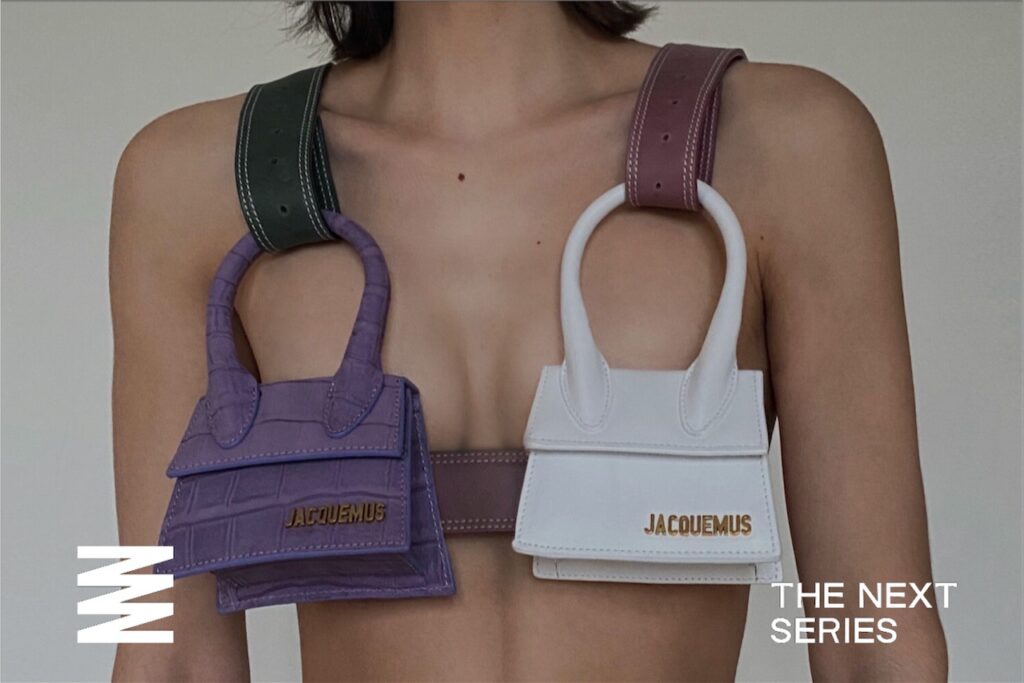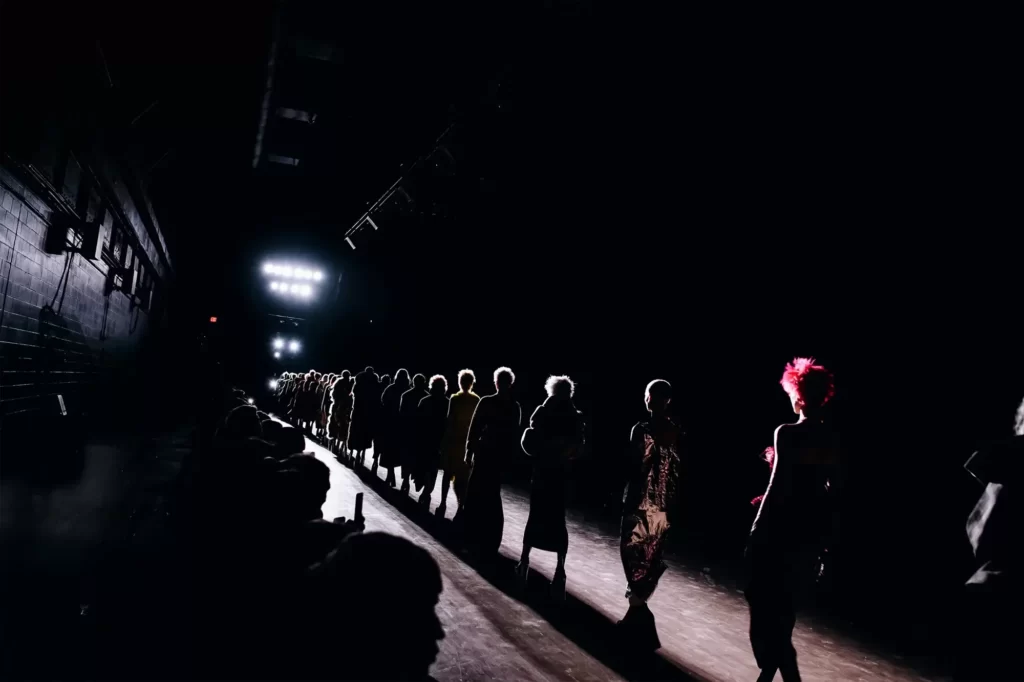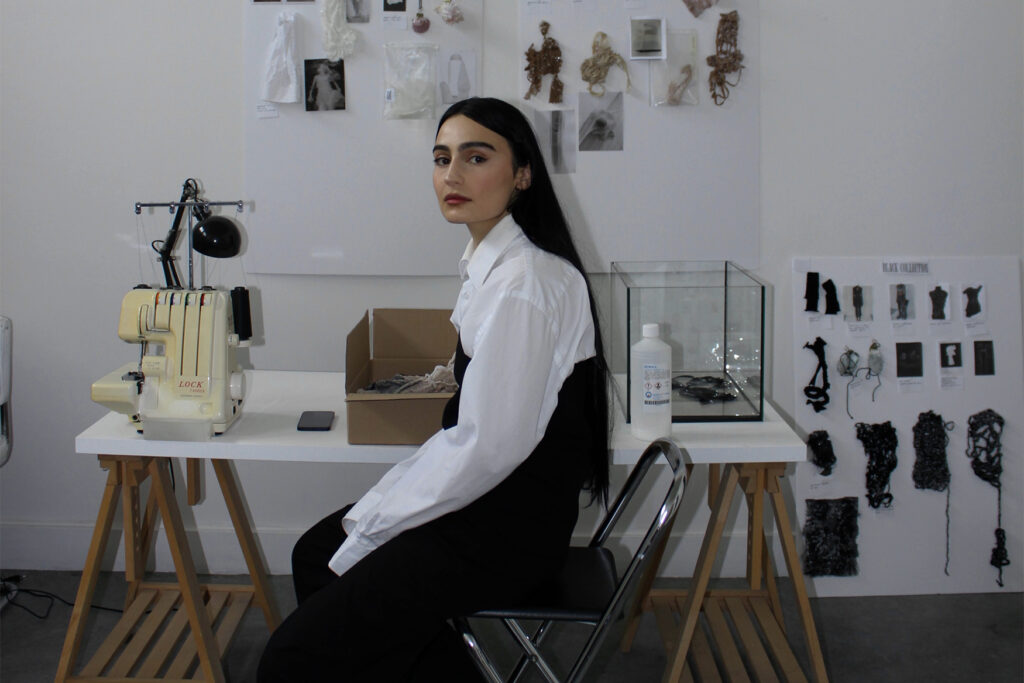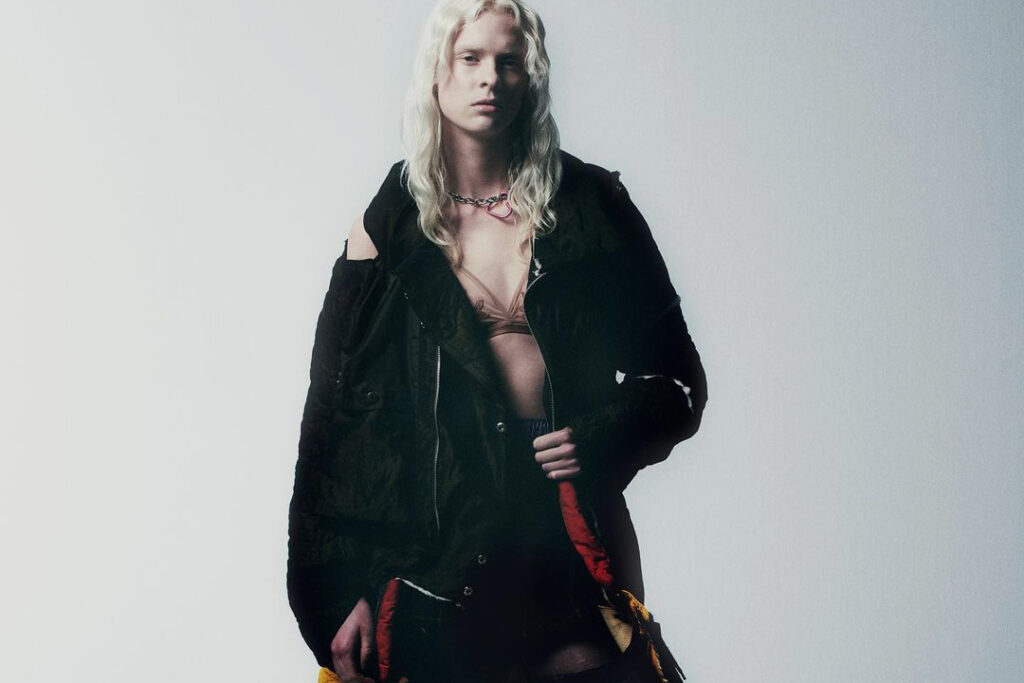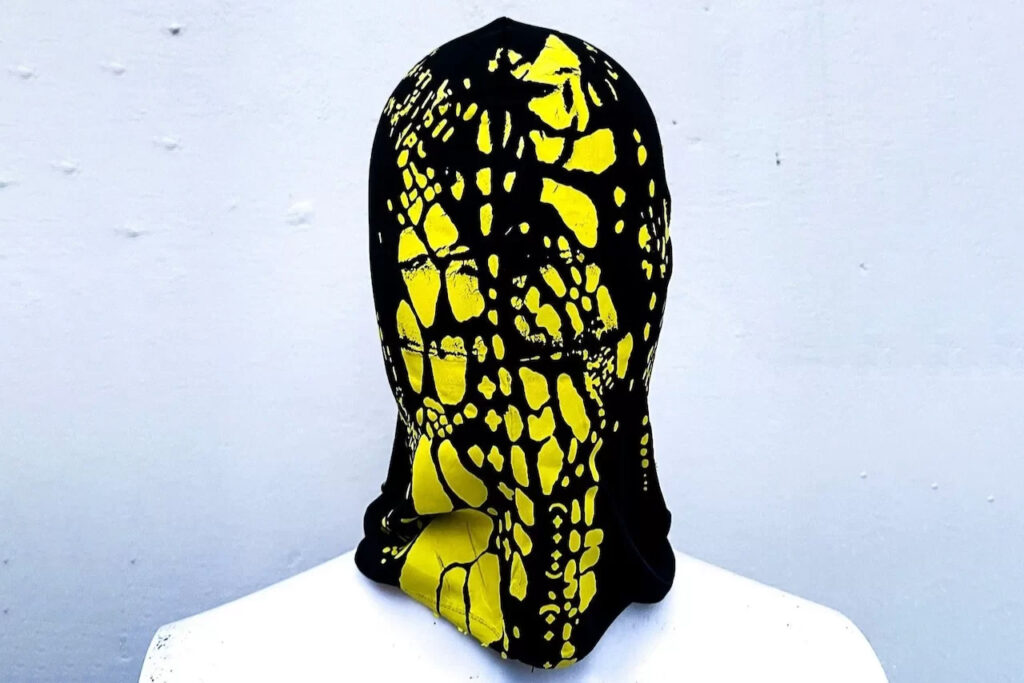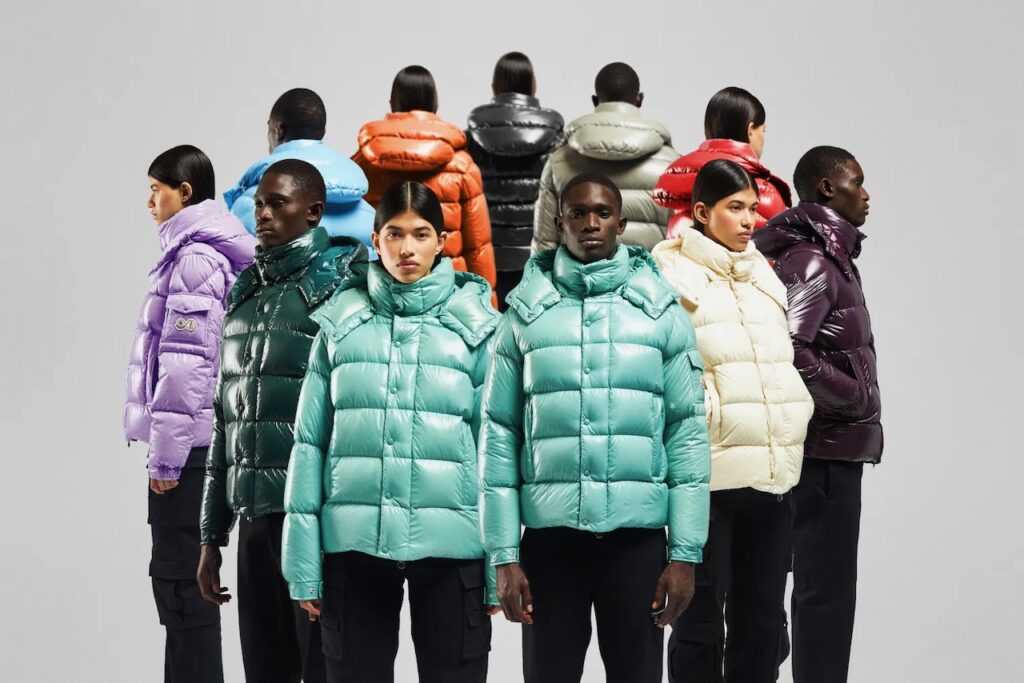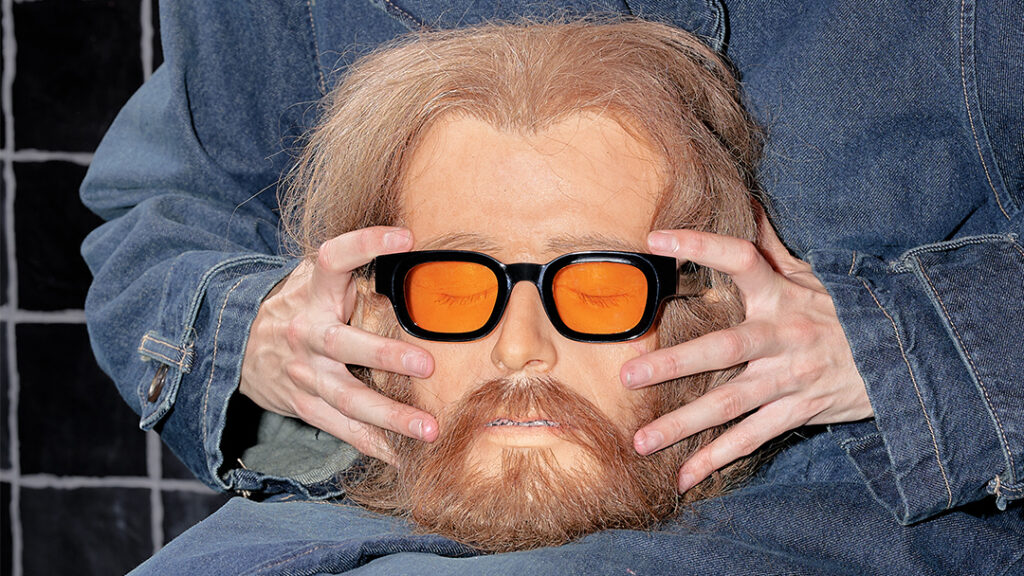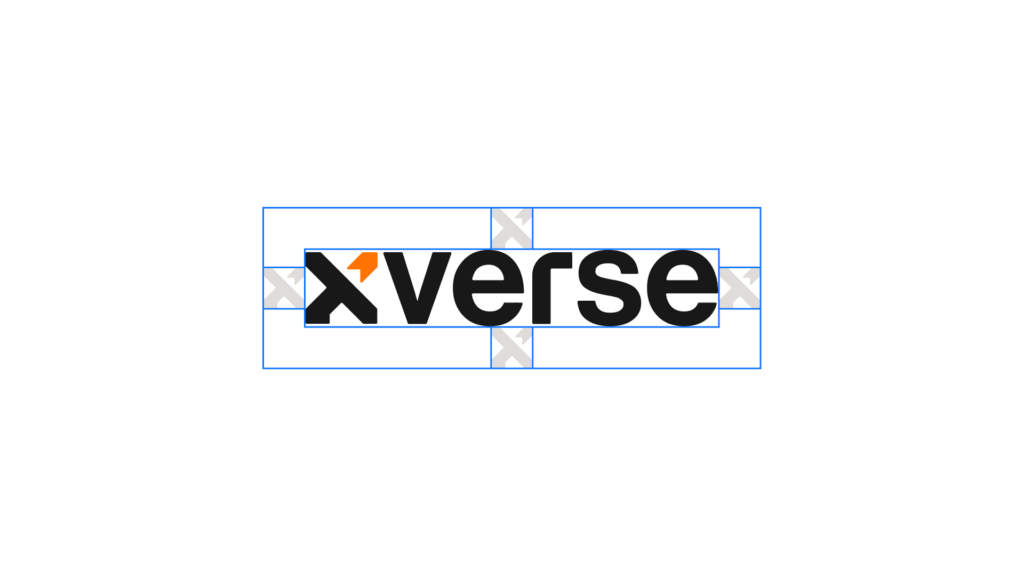Hard on the heels of the shocking news that the iconic Alessandro Michele is leaving Gucci… Let’s take a trip down memory lane shall we?
On 19 February 2015, industry stakeholders and fashionistas were invited to the latest Gucci runway, as usual. They were all sitting around a squared catwalk, waiting for the beginning of the gossiped show, but no one of them knew what to expect.
At the time, Gucci had been caught in a storm, when the creative director Frida Giannini and the CEO Patrizio Di Marco – a former couple- were fired on the spot. Not surprisingly, one should comment: Gucci’s finances lay in a pool of tears, while the house’s very design had been outdated and flat for a long time now. Despite the fact that she was meant to stage her last catwalk before leaving, Giannini walked out of her office just 10 days before the fashion show. No doubt, what happened later became a twist that rewrote the brand’s fate. But above all, it was the snapshot of a revolution that claimed a new chapter in the fashion industry.
Gucci Before Christ: The Jurassic Era
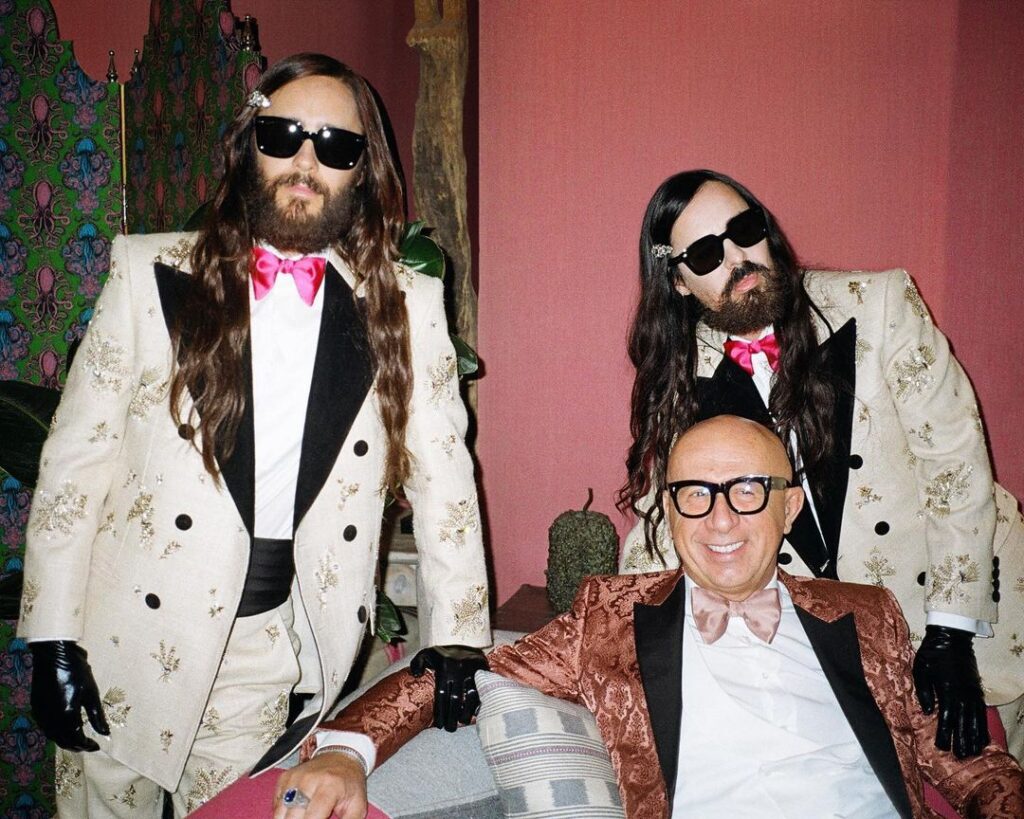
If you’re wondering.. yep, I’ve referred to him as ‘Christ’. And not -just – for his looks.
The truth is that Alessandro Michele has mirrored a shift that was taking place in the whole fashion culture. A twist in target, in the message, in the representation and in the narrative. Not for nothing, 2015 saw several giant designers depart their positions of power as well as the entrance of streetwear into high fashion. The world was getting ready for the upcoming GenZ.
Can you even remember a Gucci collection before Alessandro Michele?
Surely, Tom Ford’s oversexed campaigns still stick in the memory of every naughty Millennia. But then?
The orgiastic 90s: the Tom Ford signature
90s at Gucci were synonymous with sexiness, under the reign of the iconic Tom Ford. When the creative director joined the team, the house had already one foot in the grave: A new interpretation of the brand heritage was needed. It came in the form of a jet-set style. Provocative, minimalist, and focused on pure silhouettes, Ford’s collections were aspirational, hard to afford, and dedicated to wealthy and 30+ customers. After all, It was the time of perfect supermodels’ bodies and classist fashion, and his style perfectly fitted with the zeitgeist of the times. The characteristic aesthetic was echoed in each Adv campaign, where almost-nude bodies were shot in orgiastic scandals. Is there anyone in the fashion world that has forgotten the infamous campaign, featuring the G logo on female pubic hair?
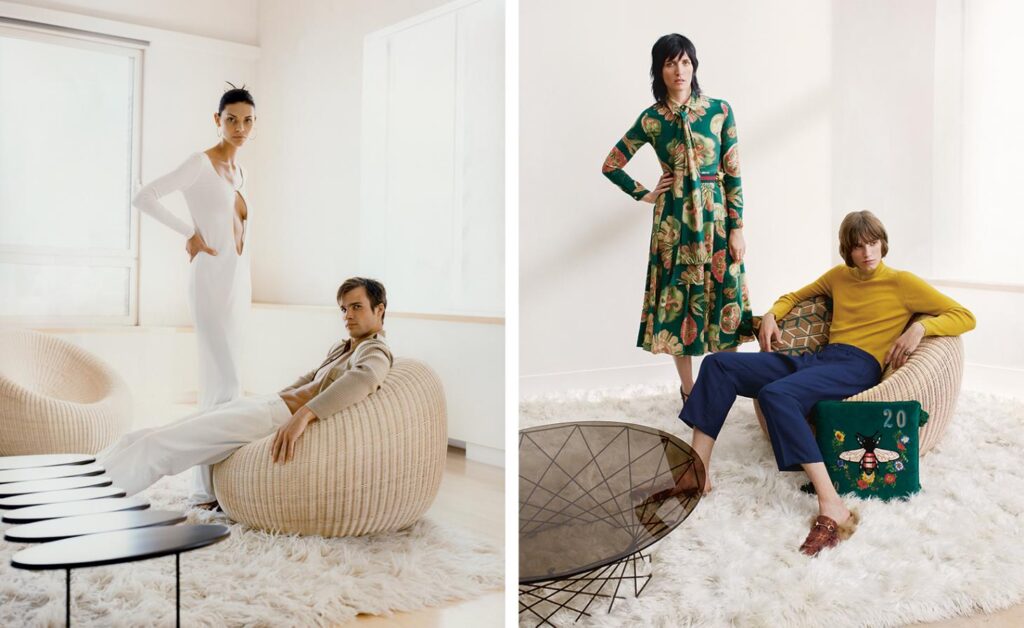
Going the Way of Dinosaurs: Giannini’s Ice Age
Frida Giannini slowly stepped away from Ford’s signature sexiness, while keeping an ultrasophisticated buzz around her design. The results? It’s hard to find someone that can remember her creations in Gucci, which dropped down into anonymity. Her fashion was way too self-referential, always reshuffling old collections in the archive, while keeping conservative imprinting that clearly split the notion of beauty and ugly. Nothing compared to the contemporary aesthetics of the anti-aesthetics – and excuse the pun!
Giannini’s design, in an attempt to bring to light the house’s heritage, became outdated. She wasn’t able to meet the needs and imaginary of changing fashion culture.
The ship was sinking.
Melting of Glaciers: New Forms of Fashion
All the guests that joined the FW2015 menswear – just a bunch of days after the Giannini departure- were aware of the chaos that was left behind. Who would be the next creative director? Till then, not a name, nor even a murmur.
And then… A pale, ephebic model with blond, long hair stepped into the catwalk, wearing an elegant red shirt edged with a feminine pussy bow. Yes, a pussy bow in a menswear Gucci collection. Each outfit was a celebration of androgyny. The line between genders was inexorably blurred, intertwining a nostalgic feeling and a hefty dose of newness- simultaneously!
“Am I in the right show? No fooling, is it Gucci?”
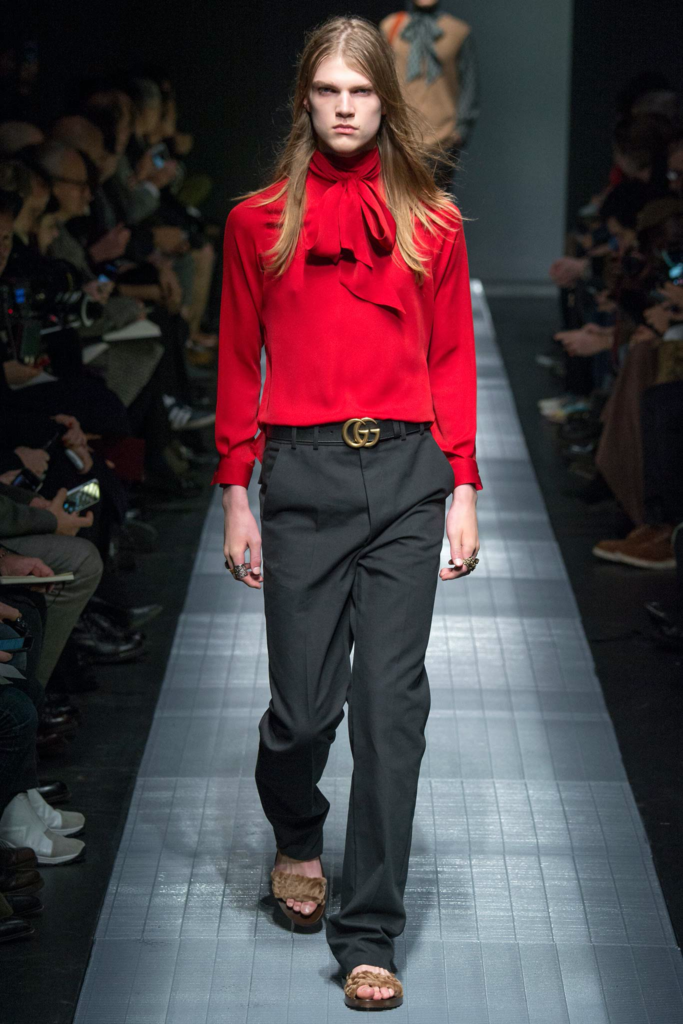
When was asked to curate the runway, just five days before the deadline, Michele took his risks, literally making a tabula rasa. The work done untill then under the direction of Giannini was thrown in the trash, and every single detail, from the very design to the model casting and even the seat arrangement, was reformed. Creating a fashion show from sketches in 5 days was a miracle. Or a race against time.
The result? A stunning fashion moment!
“Where there’s a will, there’s a way” the authority of Tim Blanks commented. At the end of the show, an unknown Alessandro Michele with his close team of designers appeared on the stage, thanking the audience. And while the world was starting to wonder who was that mysterious character, his revolution had already begun.
GucciLand: the Reign of Alessandro Michele
The fact that the new creative director has brought completely a different buzz to the Gucci house is now carved in stone.
The sexy silhouettes and the impossible-to-achieve Parisian, jet-set lifestyle gave way to a nostalgic, exoteric, and – above all – genderless aesthetics, which immediately became Michele’s signature.
In a world of exclusivity, we wanted to focus more on inclusivity. Inclusion in fashion is about how we embrace opportunity for co-creation, to recognize the power of capital, and to bring together a cross-generational and a multicultural audience
Robert Triefus, Executive Vice President of Brand and Customer Engagement, 2019.
The whole narrative has been subverted. The designer skilfully read the claims of an emerging generation that was slowly but surely taking over culture via socials, and gaining purchase power.
Rethinking the Creative Process
With a unique understanding of Gucci’s heritage and codes, Alessandro Michele brought an impressive growth of its name and finances within a few years.
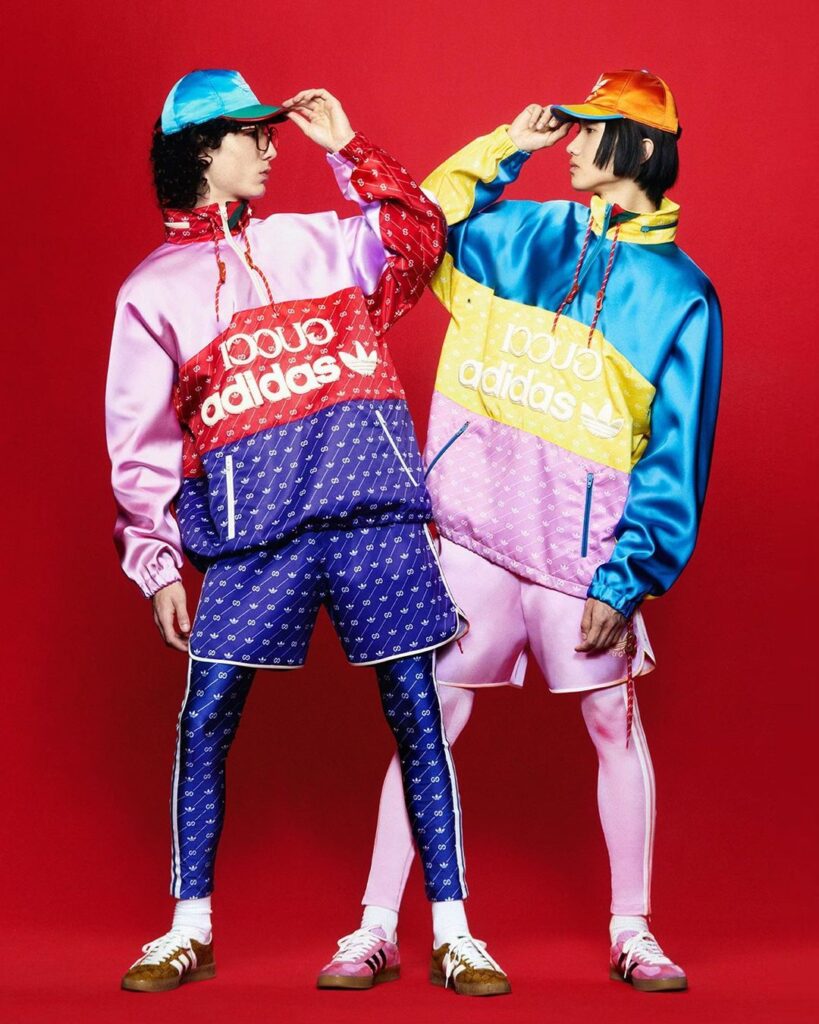
Michele masters massive, creative compilations, that bring together a vintage feeling with a pondered hybridization of styles and cultures. And such an approach allowed him to adapt the brand to unexpected collaborations, from North Face’s experimental partnership to the Hacker project with Demna’s Balenciaga, or to the Adidas-Gucci marriage.
Quality over quantity. It seems the new mantra when it comes to the creative process. Michele can be defined as one of the first pioneers that have criticized and subverted the industry’s seasonal rhythms, reducing the number of collections from 4 to 2, and experimenting with new formats to communicate them. But the seismic shift toward contemporary culture is witnessed by the blending of styles, arts, academic issues, and social discourses.
Styling Evolution: the Gucci Casual Chic Era
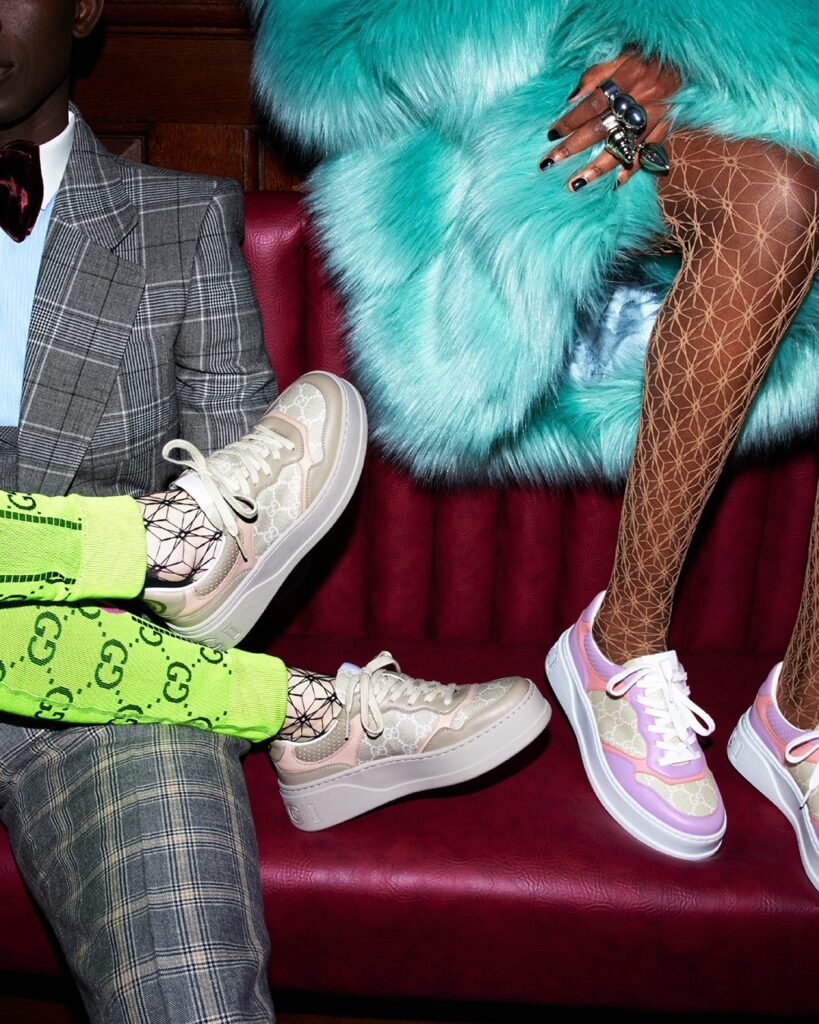
Long story short. While working under Frida, Michele was appointed as creative director of the heritage porcelain house Richard Ginori. The vintage and delicate aura, proper to the historical brand, has been reflected in his style. Indeed, porcelain colored is the skin of his models on the catwalk.
Ford’s sexiness and Giannini’s sophistication were left behind in an outdated era. Gucci was opening up to new creative horizons and younger, genderless clients. Is there a better example than the success of the Princetown Fur Loafers to explain the switch toward the casual chic era?
Gucci became intellectual, rather than carnal. Romantic, rather than sexy. Maximalist, rather than minimalist. Deeply rooted into the culture, rather than into the mere appearance. Inclusive, rather than exclusive.
Hybrid Narratives: the Serial Fashion Film
No need to be an expert to get the creative director’s love for cinema.
Recently, we fed our eyes – and souls – with his tribute to the legendary Stanley Kubrick, in both the Epilogue fashion film, featuring his collab with Adidas, and in the following Twinsburg collection.
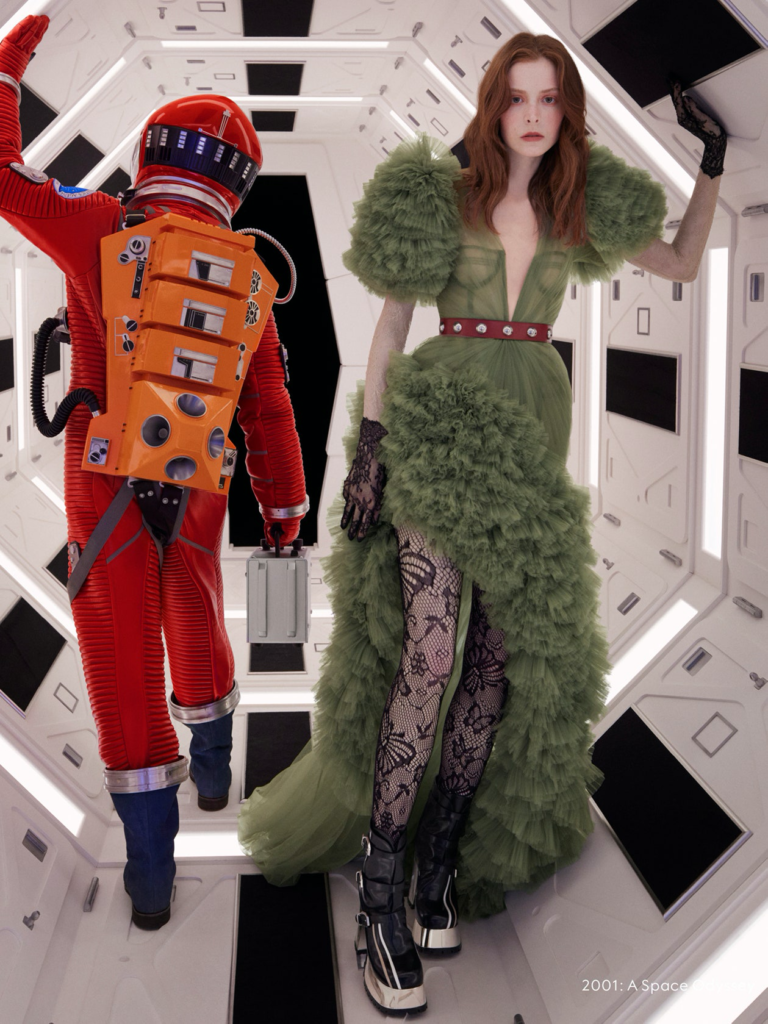
But it was back in 2020, at the dawn of a pandemic that forced the industry to go digital, that the genius of Alessandro Michele eradicated any traditional blending between the two arts.
The GucciFest has been an innovative fashion film festival through which the Maison has launched its new collection, by pushing the fashion storytelling toward a new format, the fashion series.
Overture of Something That Never Ended has been a mini-series masterpiece featuring the performer Silvia Calderoni at her best, with the participation of muses like Harry Styles, Billie Eilish, or Florence Welch. Directed by the rebel, award-winning Gus Van Sant, the 7 highly aesthetical episodes inquires with a new eye at restlessness and social anxieties, within the inevitable Gucci nostalgic frame.
Which new horizons do arise when fashion leaves its comfort zone? What life do clothes get when they stop walking down the catwalk? These are the questions that come to my mind in a present that is uncertain, but pregnant with premonitions
Alessandro Michele
Gucci Philosophy: The Zeitgeist of Times
For many fashionistas, clothes are just a matter of style and taste, and the best critique they can do is an “I like it” or “ I don’t”. Realizing that many of those people operate within the industry was to me as painful as a knife in the back. I’m talking about that kind of superficial fashion enthusiast that can get just the kind of Ye West design. Functional and pleasant to the eyes, but representing just one specific identity, merely contradictory for the contradiction’s sake – I won’t repeat here the bullshit that was printed in his Yeezy season 9 t-shirt, but the idea is quite clear.
Well, for those people, Gucci’s philosophy is a mystery.
Behind its visual blending, Alessandro Michele’s design is deeply rooted in phiplosophy and sensitive to contemporary social and artistic disocurses.
Stunning is that feeling raisin when, looking at the new Gucci collection, your brain struggles to find the real meaning beyond the mere garments.
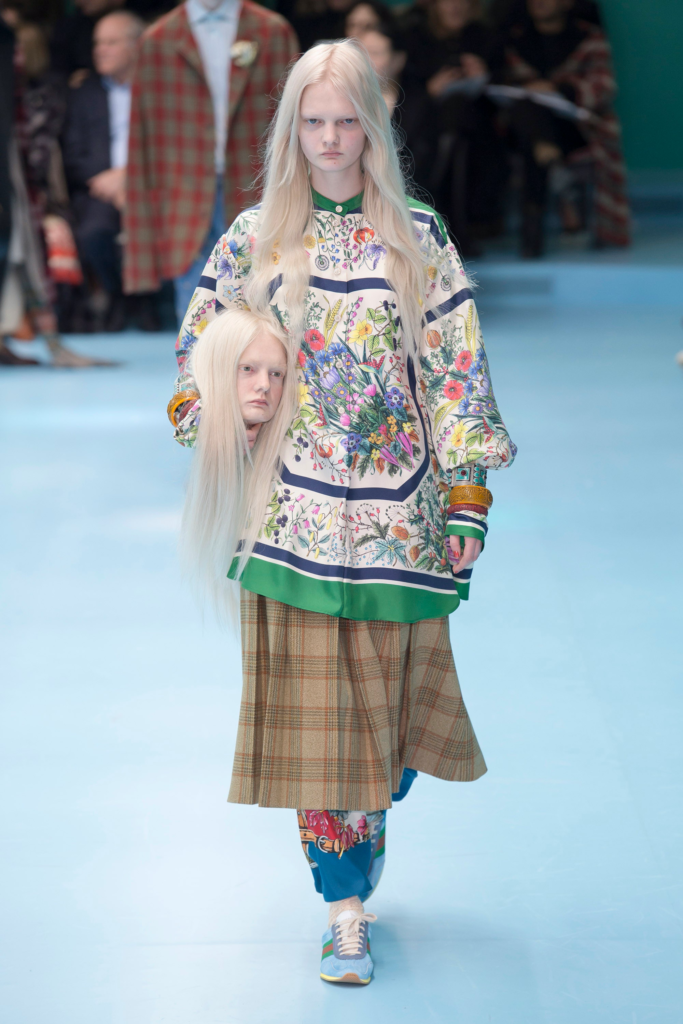
In this sense, a must-quote is the Gucci A/W 2018. The Milan Fashion Week saw a procession of eerie transhumans, some with a third eye, carrying baby dragons or replicas of their own heads under arms. Alongside, plenty of references to disparate cultures were melted into the collection, mirroring the ways in which we construct our identities.
It’s a positive concept, recalling the Haraway Cyborg Manifesto: Michele staged the infinite possibilities to liberate identity from natural and social confines. And the keyword was “hybridization”.
We exist to reproduce ourselves, but we have moved on. We are in a post-human era, for sure; it is under way. […] There’s no more just being girls or boys today. Now, we have to decide what we want to be.
The aim was to stage an army of a-gendered, no-human beings. Melting together multicultural, divergent influences. It is an immediate metaphor for an emerging way to address contemporary identities, undergoing self-regeneration. His post-human models – at time trans-human- are chimeric, fluid identities, that mirrors the contemporary human cognition and physicality, in the informational and biotechnological incorporation era.
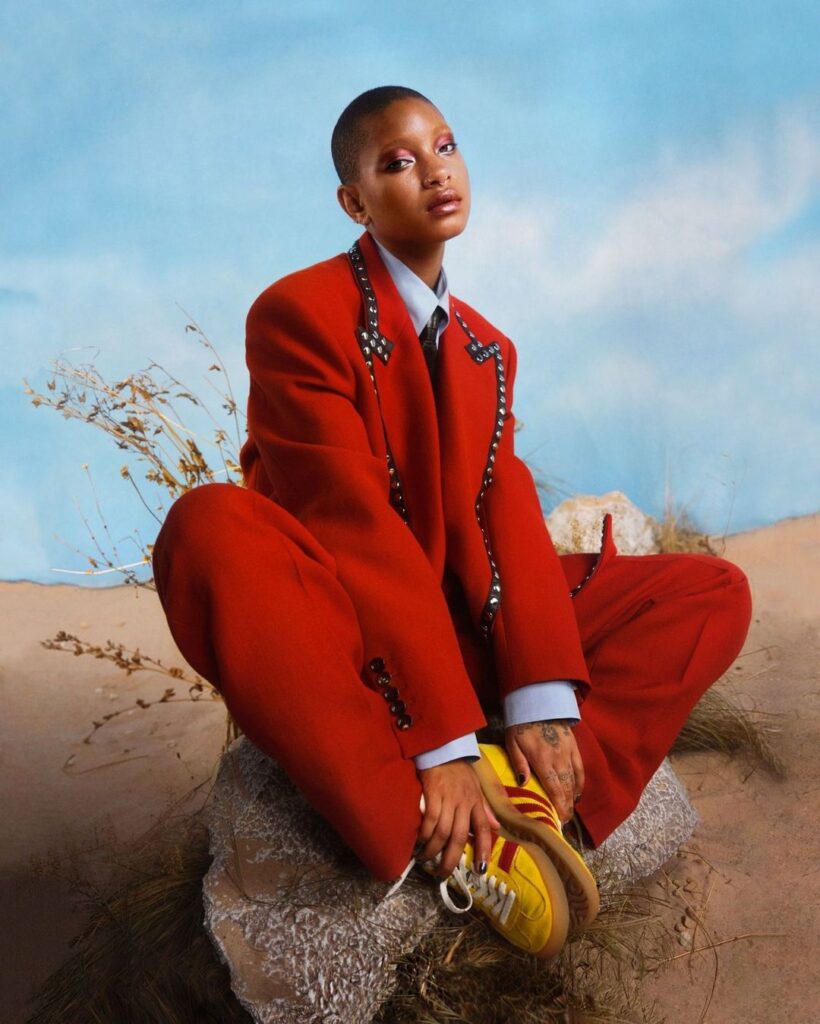
Gucci’s pluriverse engages with subjectivities through new ethics and politics, that disregard the traditional categories of identity, crowning fashion as powerful political language.
What can we say… It’s the end of an era. Michele, you will be missed.
